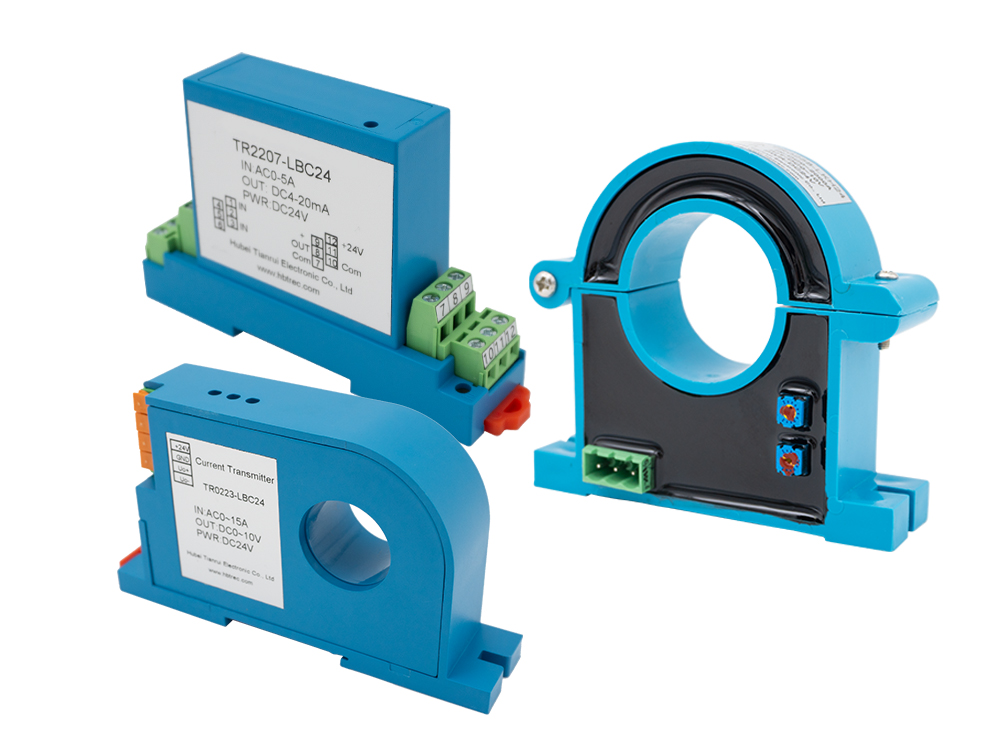Views: 0 Author: Site Editor Publish Time: 2025-10-11 Origin: Site










A current transmitter is an electronic device that converts a measured current (AC or DC) into a standardized output signal, typically 4–20 mA or 0–10 V, for transmission to control systems, recorders, or monitoring equipment. It plays a vital role in industrial automation, energy management, and power monitoring, ensuring accurate and stable communication between measurement points and control devices over long distances.

Unlike a current sensor, which only detects and outputs a raw electrical signal proportional to current, a current transmitter processes, scales, and conditions that signal into a standardized form suitable for reliable data transmission.
Working Principle
The working principle of a current transmitter is based on current sensing and signal conversion. It consists of several key stages:
Current Sensing Stage
The current transmitter detects the current flowing through a conductor using a sensing element such as:
Current Transformer (CT) – for AC current measurement based on electromagnetic induction.
Hall Effect Sensor – for AC/DC measurement using the magnetic field generated by the current.
Signal Conditioning
The small analog signal from the sensing element is amplified, filtered, and linearized. This ensures that noise or distortion does not affect the measurement accuracy.
Conversion to Standard Signal
The conditioned signal is then converted into a standard output signal (e.g., 4–20 mA). The 4 mA level typically represents zero current, and 20 mA represents the full-scale current value. This current loop format is highly resistant to signal loss and electrical interference, making it ideal for industrial environments.
Main Features
High accuracy and stability
Electrical isolation between input and output
Standardized output signals (4–20 mA or 0–10 V)
Applications
Power Monitoring and Energy Management
Used in factories, buildings, and utilities to measure current flow, monitor energy consumption, and optimize load distribution.
Industrial Automation
Integrated into PLC or DCS systems for process control, motor monitoring, and equipment protection.
Renewable Energy Systems
Applied in solar and wind installations to track generation and inverter output performance.
Advantages of Using a Current Transmitter
Accurate long-distance signal transmission
Simplified wiring for loop-powered models
Enhanced safety through galvanic isolation
Difference Between a Current Transmitter and a Current Sensor
| Aspect | Current Sensor | Current Transmitter |
|---|---|---|
| Function | Detects current and provides a raw analog signal proportional to it. | Measures, conditions, and outputs a standardized signal (4–20 mA or 0–10 V). |
| Output Signal | Voltage or current proportional to input, often unconditioned. | Standardized, linear, and isolated signal for reliable transmission. |
| Signal Distance | Short-distance measurement (within a device). | Long-distance signal transmission to remote control systems. |
| Accuracy and Stability | Depends on sensor design and environment. | Higher stability with built-in conditioning and calibration. |
| Application Scope | Used inside instruments or modules for local sensing. | Used in industrial systems for monitoring and control. |
| Example Devices | Hall effect sensors, current transformers. | Transmitter modules with signal conditioning and isolation. |
In summary, a current sensor is a sensing element, while a current transmitter is a complete signal-conditioning and transmission unit built around that sensor. Many transmitters actually use current sensors (like CTs or Hall sensors) as their input stage.